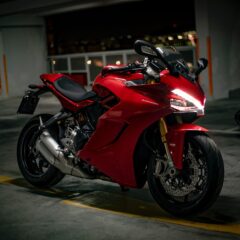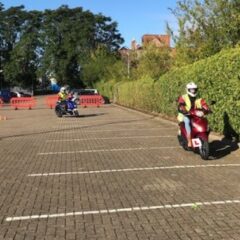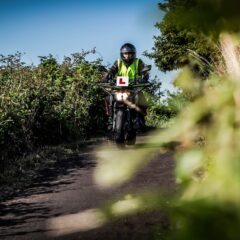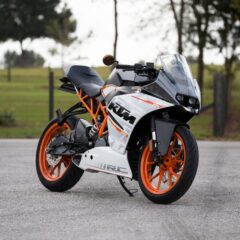
7 Top Motorcycle Accessories
With Christmas just around the corner, you might be wondering what to get your favourite motorcycle enthusiast or even a little something for yoursel...
 Phoenix Motorcycle Training LTD
Phoenix Motorcycle Training LTD
 Phoenix Motorcycle Training LTD
Phoenix Motorcycle Training LTD

Learning to ride a motorcycle is a process that takes a few steps – usually CBT motorbike training, full licence training, and finally your full motorcycle licence test. The age you are when you decide you want to get around on two wheels will determine whether you can sit for your A2 motorcycle licence test, A1 motorcycle licence or the full A licence. Depending on who you decide to take your motorcycle course with, you may be able to learn to ride and get a motorcycle licence in the same place – which often makes the testing process a little easier.
The first step to a full motorcycle licence, the CBT, is taken and assessed in the same place. You will train with a DVSA-qualified instructor and they will assess your progress over the course of the day. Once you reach the required level of competency, you’ll get a DL196 certificate. Generally, this all takes place in the same location – on the training school grounds and the immediate surrounding area. Most people can get their CBT certificate in a day.
Technically, a full motorcycle licence is an A level licence. This has no restrictions attached in terms of the roads you can use, carrying pillion passengers, or the power of the bike you can ride. However, if you are under the age of 24 (or 21 for the progressive route), an A level licence is simply not an option.
17 and 18-year-olds are restricted to A1 motorcycle licences; 19 to 23-year-olds are able to obtain an A2 motorcycle licence. There is no need to move up the motorcycle licence levels if you don’t want to. The only reason to work towards a higher level licence is to be able to legally ride a higher-powered motorbike.
DVSA examiners provide tests at approved test centres. Before the practical element of the test, you need to pass the motorcycle-specific theory test. This includes a hazard perception test. You’ll do both of these on a computer.
Depending on the school you train with, you might find that the test for your licence is held in a different area to your training. It’s a good idea to take your training as close to the place you will be testing at. This means you’ll be familiar with the roads, the traffic and the types of hazards you may come across. However, it’s not essential that you do this. We do recommend it to reduce some of the stress associated with taking a test.
At Phoenix, we book our tests 10 weeks in advance at the DVSA testing centres closest to our training schools. Because of this, in most cases, we can ensure that you get your training in the same area as your licence test. It also means you can choose a time as soon after your training as possible. We’ll escort you to the test centre on one of our bikes. We make sure you have the right power-to-weight ratio for the level of licence you’re aiming to achieve.
The DVSA examiner is a different person from your instructor. This lets them be impartial when assessing your skills and competency on a motorcycle. Being familiar with the roads that you’ll be riding on for your examination is one way to improve your confidence when you test.
It’s natural and even good, to feel a certain level of stress or nerves before and during your motorcycle licence examination. It can help you to remain alert and more aware of your surroundings. Having a level of familiarity with the area you’re testing in means you’ll have less to worry about. This helps you to focus more on the instructions the examiner is giving you throughout the examination.
Training and testing for a full motorcycle licence in the same place are not essential, but it is advisable. If you want to train for a full motorcycle licence and take your test in the same area, get in touch with us today!

With Christmas just around the corner, you might be wondering what to get your favourite motorcycle enthusiast or even a little something for yoursel...

If you love motorcycle riding, you’ve probably daydreamed about riding a motorbike for a living. A professional racer or stunt rider is OK for some...

Getting a UK motorcycle licence can seem a complicated process. Particularly when compared to a driving licence for a car. Whether you choose the pro...
This website uses cookies to personalise content, ads, and analyse traffic, sharing data with partners who may combine it with other information. See our Privacy Policy for more information.